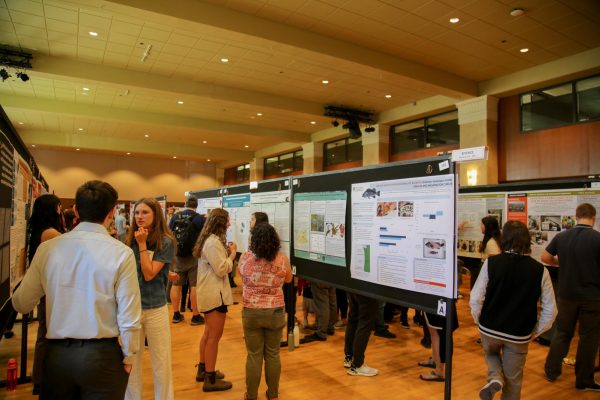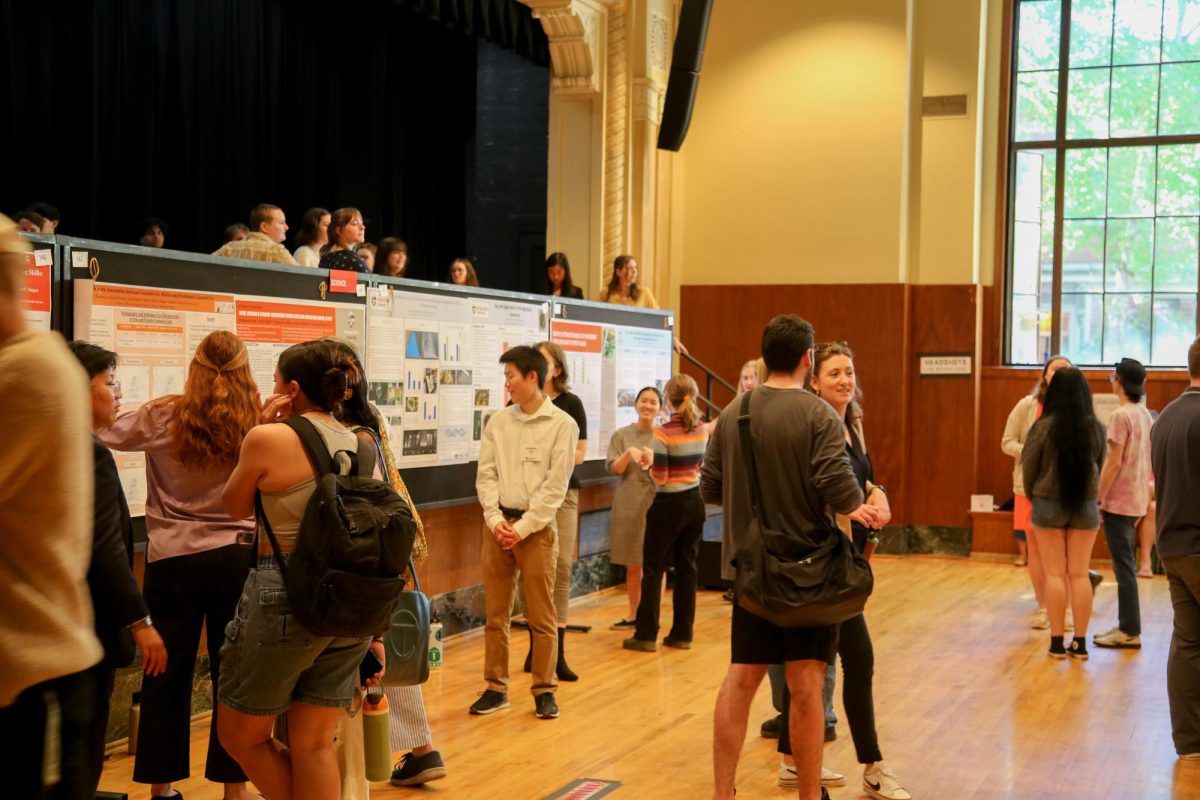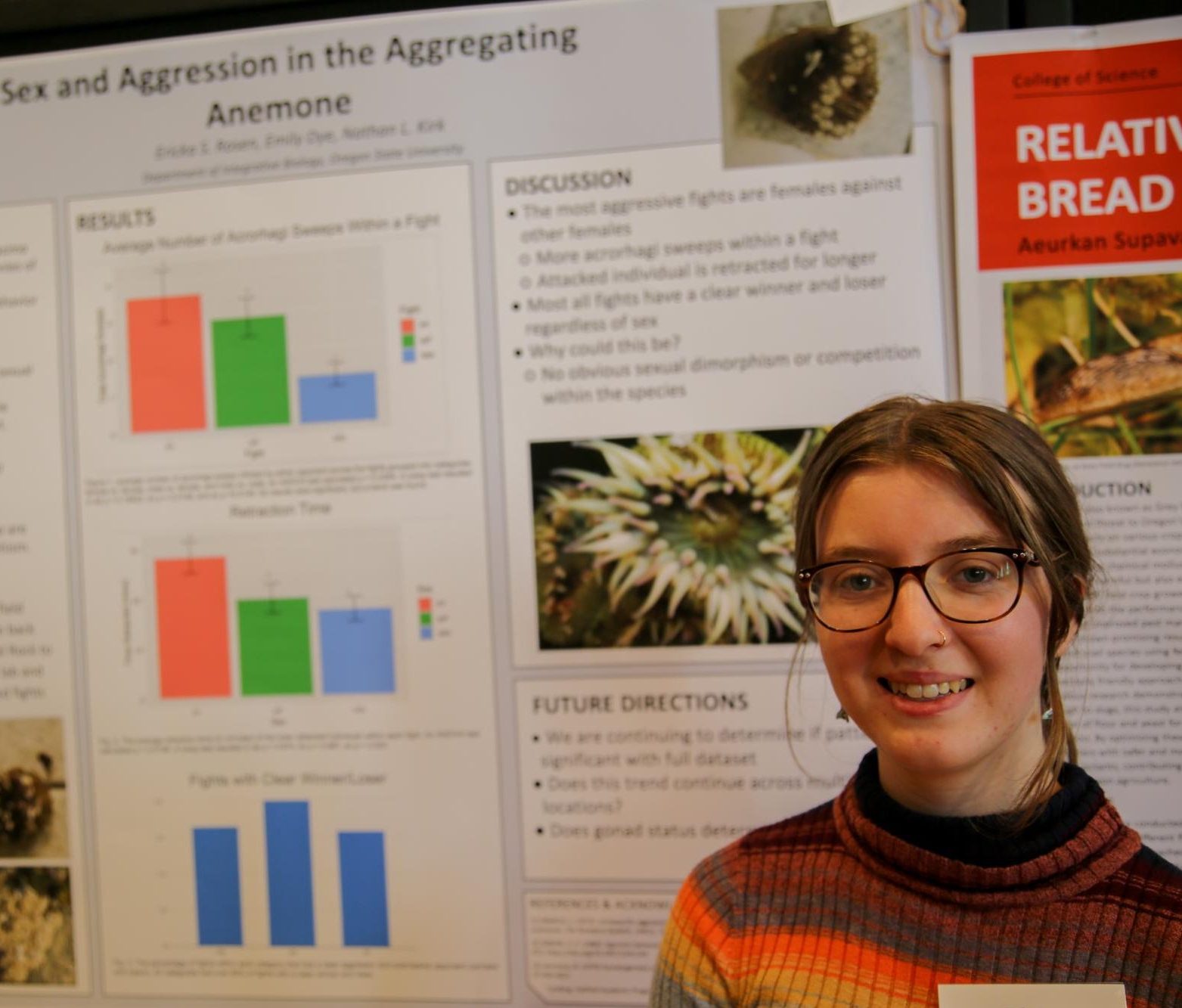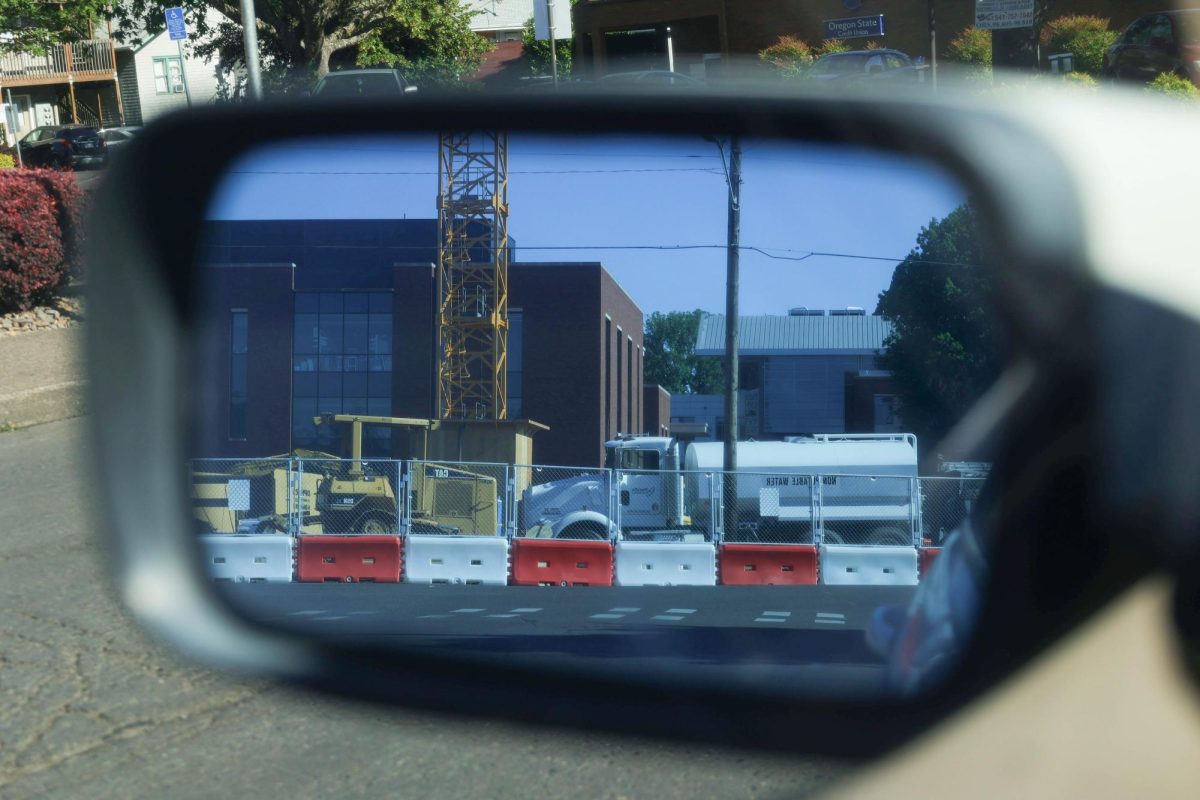“We’re fighting anemones,” said fourth-year zoology major Ericka Rosen. By that, she means making them fight each other—for science.
Rosen gave her presentation on anemone research at Oregon State University’s Spring Poster Symposium along with nearly 400 other students last Thursday.
According to OSU’s Office of Undergraduate Research website, the Spring Poster Symposium is an “annual showcase for OSU undergraduates to present their research, scholarship and creative projects to the broader university and community.”
Rosen has been working with Senior Instructor Nathan Kirk at OSU’s Hatfield Marine Science Center for about a year.
Her research involves Anthopleura elegantissima, a species of anemone, from different colonies on Seal Rock and bringing them back to the lab to pit against each other.
On the real rock, anemone colonies compete for space on the rock, where it’s safer, Rosen said. The lab allows them to study how sex differences could impact this competition.

Stephanie Ramos and Amanda Kent, the OUR’s Associate Director and Program Coordinator, said in an interview before the event that 21 students from high schools and four students from OSU’s Cascades campus would also be presenting.
Kent also said they would have a mix of students in sciences, engineering and liberal arts.
According to Ramos, the symposium is pretty much on par with the University of Washington’s symposium, although they’re a bigger school than OSU.
Ramos also said that many OSU students who present at the symposium later go on to larger conferences.
One OSU student presented at the American Geophysical Conference this year, according to Kent.
Ramos wrote in an email that contributors would gain increased exposure, recognition, networking opportunities, feedback, the chance to refine their presentation and communication skills and something to add to their resumes or cover letters.
Ramos also wrote in her email that at past symposiums, the OSU Foundation had attended the event to gather inspiring stories from students in order to further funding opportunities for students interested in research.
Kent and Ramos detailed some of the organizational work that goes into these events.
“We have a lot of workshops that we host in the spring term that are a way to help students see what posters look like,” Kent said.
Kent said she likes to think of the posters as a storyline.
“The poster continues to show the viewers the results of that project, any visualizations that might have come from it, like graphs or charts, or photos of students in the field,” Kent said.
Kent also said that students can have fun with the design elements.
On Rosen’s poster, she had graphs showing that female anemones are significantly more aggressive than males, especially towards other females.
“They move in slow motion,” Rosen said. “We record for an hour and to watch it we have to speed it up.”
Rosen said that they can tell one has lost when it either runs away or closes up for a long time. According to her, 60% of fights have a clear winner and loser.
“We don’t really know why they want to fight other females,” Rosen said.
The sexes are so similar she can’t tell them apart until they are dissected after the fights.

Rosen said future studies could try to figure out if they’re using chemical signaling to tell each others’ sexes or if aggression makes them more evolutionarily successful or whether the larger colonies have a larger percentage of females.
Rosen said Kirk helped her create the presentation so it wasn’t too wordy or visually unengaging.
According to Ramos, this review process, which the OUR is involved in, is pretty intense.
“Students don’t just register themselves and they’re good to go. We have a system in place that verifies with the faculty that they’re doing that work, that faculty approves of that presentation,” Ramos said.
Ramos said they work every year to be more intentional about making the symposium more meaningful for students.
One of the most memorable moments from past symposiums, according to Ramos, was when a student’s OSU alumni grandparents showed up to watch her present.
Part of this student’s presentation was imitating the sounds of fin whales using her violin.
“The student was really excited to have them. I think they had presented somewhere else before and their grandparents couldn’t make it,” Ramos said. “How often do you get to bring your parents to campus to see you in action?”
Rosen remarked about how she enjoyed the opportunity.
“My goal is that when people see an anemone colony, they say ‘Oh yeah I know what that is!’” Rosen said, gesturing to a picture of a colony on her board. “Anemones are very underloved.”















































































































